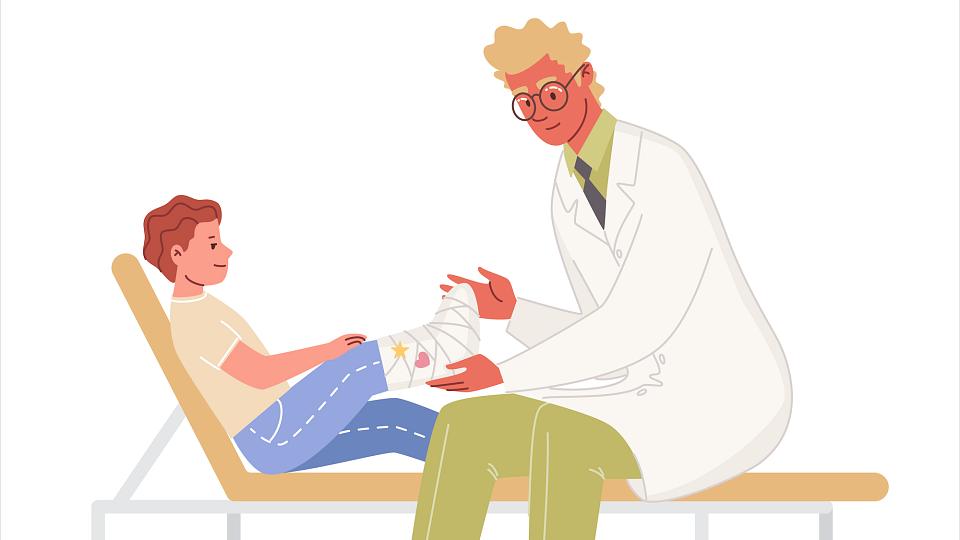
What to Do When Your Child Sprains Their Ankle
Ankle sprains are one of the most common injuries in children. This isn’t a surprise when you consider all the running, jumping, and playing they do—whether it’s on a soccer field or at home in their back yard.
Joy English, MD, a sports medicine specialist and medical director of the Orthopaedic Injury Clinic at University of Utah Health, weighs in on the topic.
What are the signs and symptoms of a sprained ankle?
A sprain usually happens when the ankle rolls over the foot in an awkward way. Sometimes you hear a "pop.” It’s often associated with:
- Pain along the outside or inside of the ankle
- Swelling in the ankle and foot
- Bruising in the ankle and foot
- An unstable feeling as if the ankle is going to give way
- Difficulty putting weight on the ankle
Are there different types of sprained ankles?
You can have a sprain of the lateral (outside) ligaments or the medial (inside) ligaments. You can also have a sprain of the ligaments that hold the lower leg bones together at the ankle—this is called a high ankle sprain.
What do you do if you think your child sprained their ankle?
- Rest from activities that aggravate pain.
- Ice for 15-20 minutes at a time to help alleviate pain. You can do this multiple time a day. Do not apply ice directly to the skin or you may be at risk for frostbite.
- Compression in the form of an ACE wrap or a sleeve. Sometimes a walking boot may be used, but this is best done under the guidance of a physician.
- Elevate the affected ankle above your heart throughout the day as often as possible to help minimize swelling.
When can your child return to activity?
The time to return to play for an ankle sprain varies widely and can take anywhere from a few days to a month or more. Your doctor or physical therapist can help guide your return to play.
When to see a doctor
If rest, ice, compression, and elevation are not working well to treat the pain and swelling, OR if your child is unable to walk on the leg, OR if the leg is tender over the bony part of the ankle, an evaluation with a doctor and an X-ray are probably necessary to make sure there is no break in the bone.
Learn More About Pediatric Sports Medicine & Orthopedics
Seven Questions for a Pediatric Orthopedic Surgeon
On this episode of Seven Questions for a Specialist, pediatric orthopedic surgeon Joshua Speirs, MD, shares insights into the typical diagnoses he encounters, debunks common misconceptions about pediatric orthopedics...





